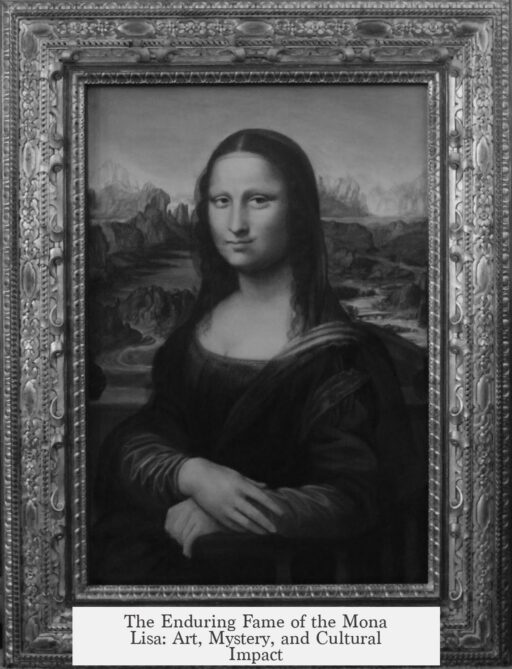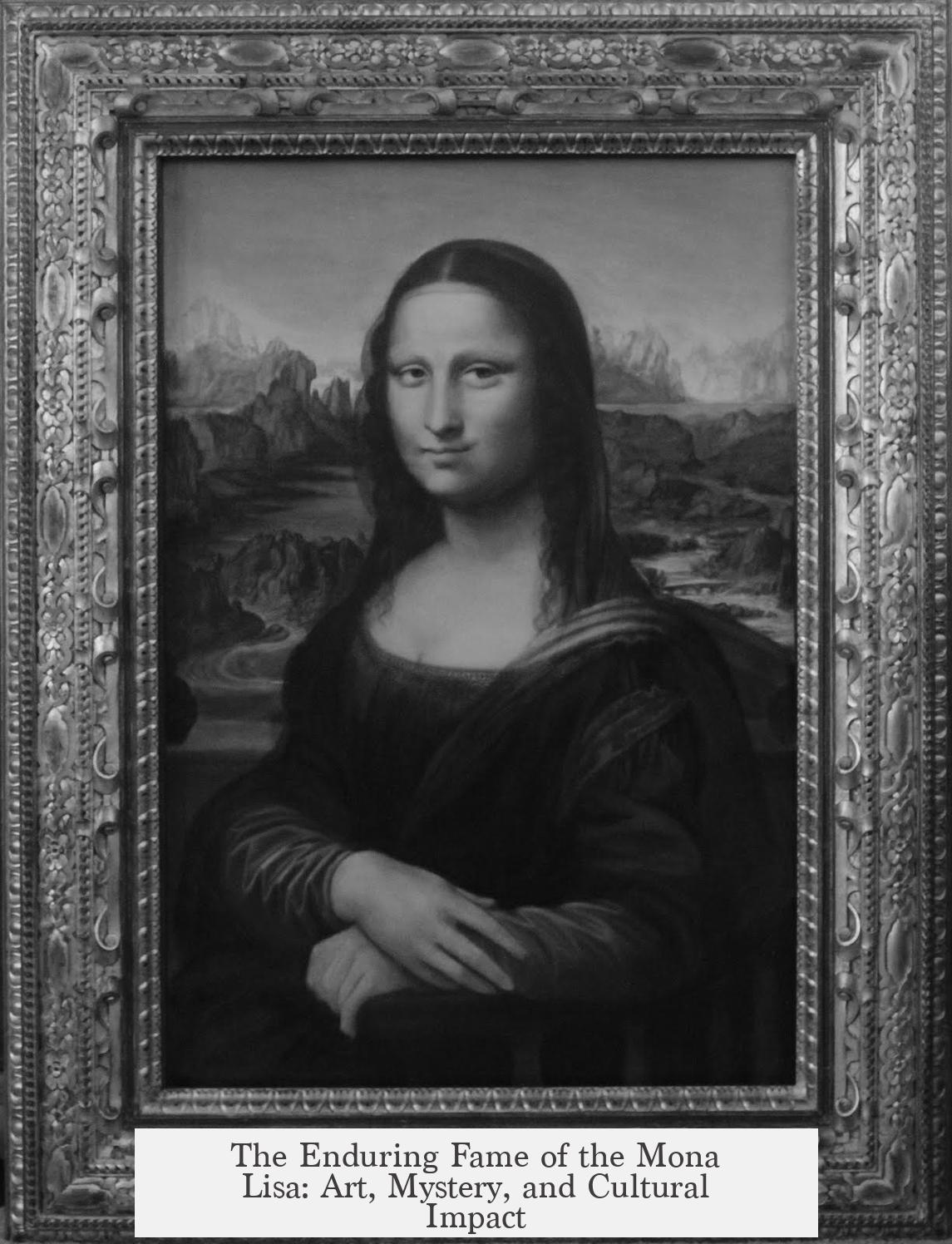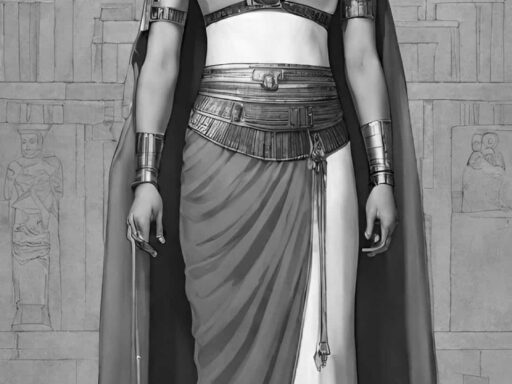The Mona Lisa is famous due to a blend of historical significance, artistic innovation, and cultural mythology. Its fame predates the 1911 theft, rooted in Leonardo da Vinci’s renown, the painting’s revolutionary style, and royal ownership. Post-theft, widespread media coverage and commercialization amplified its status worldwide.
Leonardo da Vinci’s reputation plays a crucial role. His name is synonymous with the Renaissance and artistic mastery. There are roughly 25 known or speculated paintings by him, making any piece he created exceptionally rare and valuable. The Mona Lisa stands out as a representation of Leonardo’s diverse genius, earning respect not just as a physical artwork but as an emblem of Renaissance innovation.
The painting broke several conventions of its time. Unlike typical portraits then, it features an intimate, cropped composition without religious symbolism. The subject’s gaze engages viewers directly, and the use of sfumato, a technique involving soft transitions between colors and tones, lends her face a lifelike quality. Her ambiguous smile and blurred background also set new standards for portraiture. This style inspired many artists, marking the painting as a turning point.
Ownership history adds to its prestige. Before being displayed publicly, rulers and nobles owned and exhibited the Mona Lisa privately. Its presence in royal collections fostered admiration and imitation. After the French Revolution, the painting became part of the Louvre Museum’s collection, where Romantics elevated it into cultural lore. Poets and writers began to romanticize the subject, embedding her into European cultural consciousness.
Art criticism in the mid-19th century propelled the Mona Lisa’s fame further. Walter Pater, a pioneering English critic, published a poetic essay describing the painting as a “ghostly beauty.” He depicted the subject as an enigmatic figure, “older than the rocks among which she sits” with an aura of mystery and timelessness. Pater’s vivid language helped frame the painting’s allure, influencing public perception and art discourse.
One major factor contributing to the painting’s mystique is the unknown identity of the sitter. Unlike many portraits that clearly depict notable individuals, this woman’s exact identity remains a subject of debate. This ambiguity invites speculation and deepens the painting’s enigmatic appeal.
The 1911 theft dramatically increased the Mona Lisa’s global fame. The painting was stolen from the Louvre, igniting widespread media attention across continents. Publicity campaigns, newspaper stories, and rewards elevated the Mona Lisa from a treasured French artwork to an international icon. People worldwide became familiar with her image.
Following its recovery, the Mona Lisa’s image was commercialized like never before. Reproductions proliferated across postcards, stamps, greeting cards, and other media. Photographs, parodies, and artistic tributes—including Marcel Duchamp’s famous moustached version—further embedded the painting in popular culture. Celebrities imitated her pose, and her face became a symbol in theater and film.
The Louvre’s loans of the painting in 1963 and 1974 reinforced her international fame, exposing the artwork to global audiences. These exhibitions expanded her reach beyond Paris and deepened her cultural significance worldwide.
Popular fiction, such as Dan Brown’s novels, has expanded and sometimes distorted the Mona Lisa’s story. These works propose sensational theories about her identity and symbolism, including unfounded claims linking her to religious conspiracies or viewing her as a self-portrait. These narratives fuel public fascination and maintain her presence in contemporary discussions.
Today, more than 8 million visitors see the painting each year at the Louvre. Its continuous exposure solidifies its legendary status. While it may not be the most exquisite or technically flawless Renaissance painting, the Mona Lisa is a cultural icon because people consistently engage with its story, imagery, and mystery.
| Reason for Fame | Details |
|---|---|
| Leonardo da Vinci’s Reputation | Rare work by a legendary Renaissance artist. |
| Artistic Innovation | Unusual composition, sfumato technique, intimate subject. |
| Royal Ownership | Held by kings, later publicly exhibited in the Louvre. |
| Art Criticism | Walter Pater’s influential essay popularized the painting. |
| Mystery of Identity | Unknown sitter adds intrigue. |
| 1911 Theft | Worldwide media attention makes the painting famous globally. |
| Commercialization | Widespread reproduction in media and popular culture. |
| International Exhibitions | Loans compiled global audiences and fame. |
| Popular Culture | Fiction and parodies sustain interest and myths. |
- The Mona Lisa’s fame builds on Leonardo’s legacy and artistic breakthroughs.
- Its mysterious subject invites endless speculation and fascination.
- The 1911 theft created massive global publicity.
- Reproductions and exhibitions have made it a cultural icon.
- Much of its fame results from myth and ongoing public conversation.
Why is the Mona Lisa so Famous?
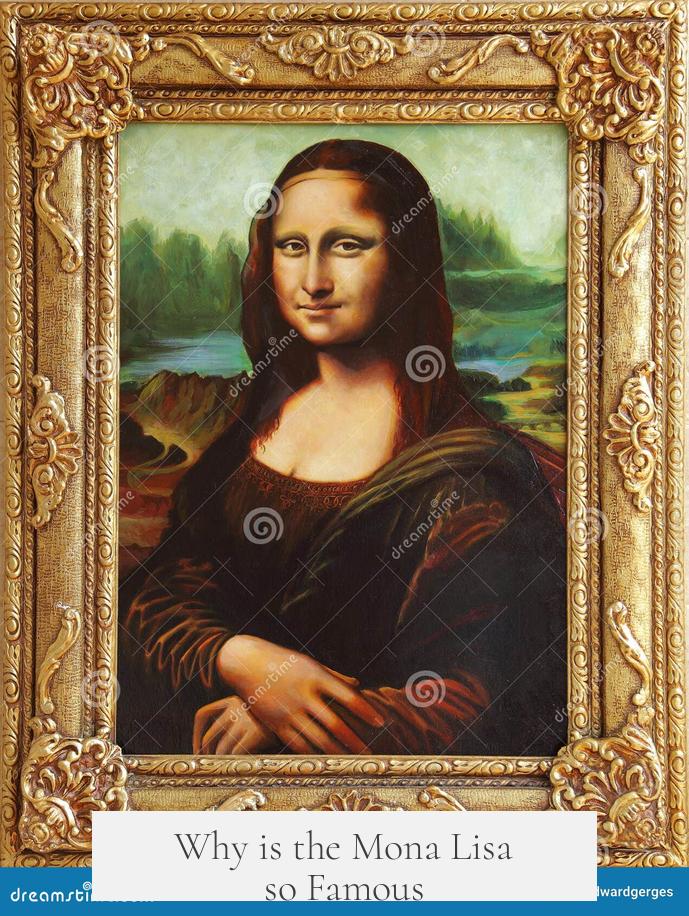
Simply put, the Mona Lisa is famous because she’s not just a painting — she’s a cultural icon shrouded in mystery, history, and hype. But how did a 16th-century portrait become one of the most recognized images worldwide? Let’s unravel the layers behind her fame.
You might think the Mona Lisa’s fame rests purely on artistic merit, but there’s more beneath the surface. Sure, she’s beautiful — that enigmatic smile and her calm gaze captivate millions every year. However, many other portraits share technical finesse. So, what makes this particular work stand head and shoulders above the rest?
Leonardo da Vinci: The Man Behind the Myth
Leonardo da Vinci’s reputation plays a huge role. He wasn’t just any artist; he was the Renaissance Man. Not just a painter, but a scientist, inventor, and thinker extraordinaire. Owning a work by Leonardo carried serious prestige, especially since only about 25 of his paintings are known to exist today. The Mona Lisa is one of those few gems.
Leonardo wasn’t always considered the best at painting — some argue others excelled in technique — but his fame was built on his mastery of multiple fields. Having his name attached to the Mona Lisa made it instantly noteworthy long before the painting became a household icon.
Breaking the Rules: A Portrait Like No Other
The Mona Lisa wasn’t just another portrait stuck in the conventions of the time. It broke the mold in several ways. For one, it’s oddly cropped; her hands rest casually in the foreground, an intimate stance unlike stiff, formal portraits common then. Plus, she isn’t a religious figure, which was the norm for artists of that period.
Leonardo introduced sfumato — a technique that blends colors and tones softly — that gave Mona Lisa’s face a lifelike, almost floating quality. The blurred, distant background contrasts sharply with her crisp form, making her presence pop. This innovative approach inspired countless artists immediately afterward, kicking off a new style of portraiture.
Royalty, Public Display, and Literary Boosts
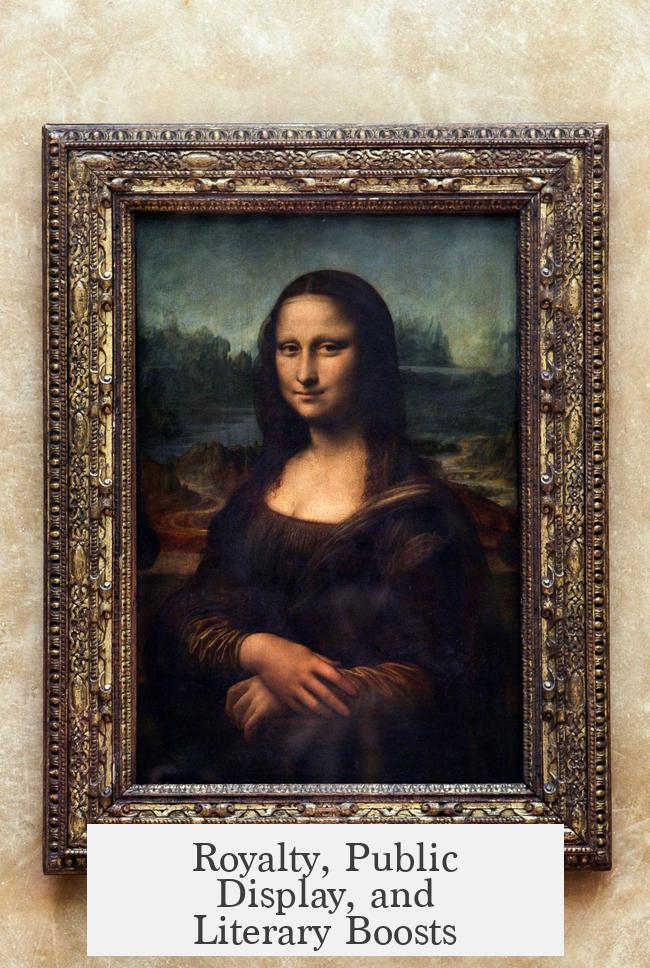
Before she sat in the Louvre, the Mona Lisa belonged to kings and nobles. Though housed in private collections, copies and imitations of the painting circulated, hinting at its existence. The painting’s transfer to the Louvre after the French Revolution shifted things dramatically: now, the public could see it. This timing in the Romantic era helped fuel fascination.
Writers and poets began referencing the Mona Lisa, imbuing her with mystique. English art critic Walter Pater’s 1860s poetic essay is a milestone. He described her as a “ghostly beauty,” full of secret thoughts and passions, older than the rocks she sits among. His vivid wording catapulted the painting’s mystique and helped shape early art criticism itself.
The Mystery of Her Identity
One of the Mona Lisa’s biggest puzzles — her identity — adds to her allure. Scholars still debate who she really was. Was she Lisa Gherardini, a merchant’s wife? A disguised self-portrait of Leonardo himself? Or something more cryptic? Nobody truly knows, and that unknown keeps curiosity alive.
The 1911 Theft that Made Headlines Worldwide
Her appearance in newspapers exploded after the 1911 theft. When Vincenzo Peruggia swiped the painting from the Louvre, the world took notice. The crime wasn’t just about art theft; Mona Lisa was a treasure of France, and the global search plastered her face everywhere. Rewards were offered; newspapers buzzed worldwide. Suddenly, her fame wasn’t confined to art lovers — everyone knew about her.
Commercialization and Pop Culture Fame
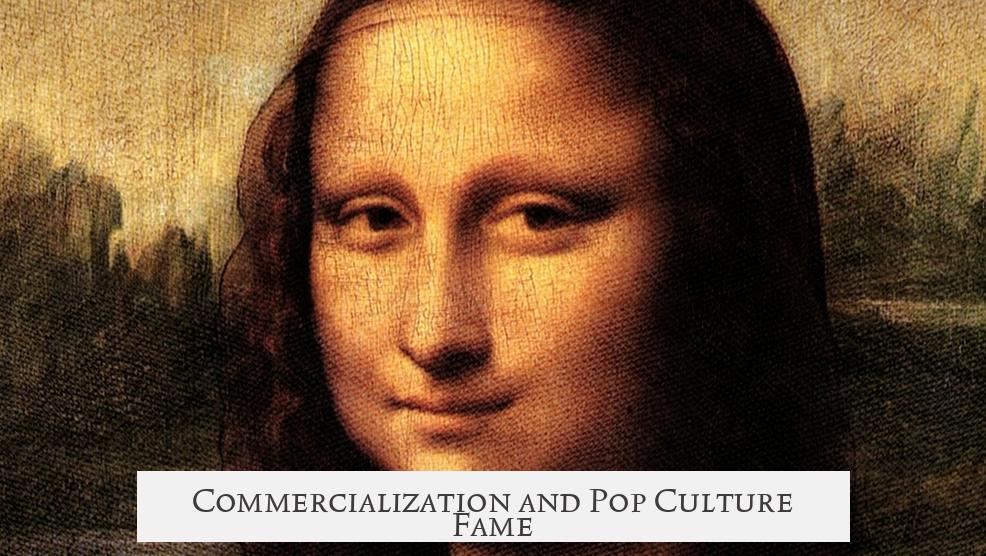
Once recovered, the Mona Lisa’s image was everywhere. Thanks to modern printing and photography, her face became a cultural staple. From greeting cards to postcards, stamps, and even parodies—like Marcel Duchamp’s mustache-wielding version—the Mona Lisa embraced commercial culture fully.
She’s appeared in movies, inspired fashion poses by film stars, and entered the art world’s playful critique. Dan Brown’s controversial claims in his novel about hidden secrets only thickened the plot, whether or not you buy into conspiracy theories. A painting that sparked rumors about secret unions, gender ambiguity, and hidden messages? That’s appeal beyond brushstrokes.
The Continued Global Obsession
Today, over 8 million visitors a year flock to see the Mona Lisa in the Louvre, surrounded by bulletproof glass and security guards. Her fame endures because the story never stops evolving. Every viewer encounters her a little differently, adding to the personal mythology.
Why the Myth Outshines the Masterpiece
The Mona Lisa isn’t famous because she’s the best painting ever made or a flawless Renaissance wonder. She’s famous because people talk about her — continuously, for centuries. The art, the mystery, the theft, the literary praise, and endless media exposure combine to build a legend.
In a way, the painting’s fame is about the story around it, not just the image itself: a painting that kept stirring conversation, wonder, and debate for 500 years. It’s a masterpiece of myth as much as of art.
What Can We Learn From the Mona Lisa’s Fame?
- Art isn’t just about technique. Context, history, and narrative can elevate a piece far beyond its canvas.
- Mystery sells. The unknown about Mona Lisa’s identity keeps interest alive, proving that questions can be as powerful as answers.
- Public engagement matters. The painting gained momentum once displayed publicly and intertwined with pop culture and media.
- Myths grow in layers. Over time, stories surrounding artworks or people build, often overshadowing original facts but enriching cultural significance.
So next time you wonder why Mona Lisa’s smile haunts so many, remember: it’s not just art, it’s an ongoing conversation. And like any good story, her fame keeps evolving. What will her legend look like 100 years from now? That’s one mystery we can’t yet solve.
Why did Leonardo da Vinci’s reputation contribute to the Mona Lisa’s fame?
Leonardo was seen as a master and the ultimate Renaissance Man. There are only about 25 paintings attributed to him, so owning one is rare and valuable. His fame helped the painting gain attention early on.
How did the Mona Lisa break painting conventions of its time?
The portrait is cropped unusually and features an intimate, non-religious subject. The blurred background and sfumato technique were unique. This new style influenced many artists immediately after.
What role did the 1911 theft play in the painting’s fame?
The theft made worldwide headlines, turning the Mona Lisa into a global sensation. Newspapers and rewards spread awareness. Suddenly, everyone knew about the painting.
How did Walter Pater’s art criticism affect the painting’s reputation?
Pater wrote a poetic essay praising the painting, calling it a ghostly beauty. This early art criticism helped elevate public interest and made the Mona Lisa famous in intellectual circles.
Why is the identity of the Mona Lisa’s subject important to its allure?
The true identity of the woman remains unknown. This mystery adds to the painting’s fascination and keeps people interested in her story.
How has popular culture contributed to the Mona Lisa’s ongoing fame?
The painting appears in films, parodies, songs, and books. Dan Brown’s novels added myths and conspiracy theories. These references keep the Mona Lisa relevant today.
